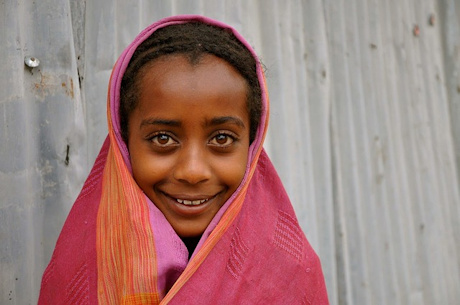Learn about Ethiopia in east Africa, the largest country on the ‘Horn of Africa’. This mountainous nation, with its hot, dry valleys and arid deserts, has very little rain. Ethiopia was once the second-poorest country in the world, but has seen rapid economic growth in recent years. Yet the legacy of civil war and drought still lives on. Use our printable resources below to find out more.

A Little Geography…
- Ethiopia is a land-locked country bordering six nations: Eritrea, Djibouti, Somalia, Kenya, South Sudan and Sudan. The capital is Addis Ababa.
- The country has a population of around 106 million people living in an area of about 1 million square kilometres. The highest point is Ras Dejen at 4,550 metres. The country’ s central mountain range is divided by the Great Rift Valley.
- Over 80 ethnic groups make up the population, with over 280 languages spoken. English and Arabic are also commonly used.
- Agricultural has traditionally been Ethiopia’s main source of income, with coffee as a key export. But in recent years, service industries such as transport and hospitality have been raising more revenue. Ethiopia remains a poor nation, however. In rural areas, many farmers just grow enough food to feed their families.
A Little History…
- Ethiopia is the oldest independent country in Africa. It managed to avoid European colonisation, and although it was briefly occupied by Italy during the Second World War, it has remained independent for centuries.
- The country used to be ruled by a series of emperors, the last being Haile Selassie who ruled from 1930–1974. This ‘Ethiopian Empire’ was also known as Abyssinia. When Selassie was removed from power by a military coup in 1974, Ethiopia experienced decades of civil war as different groups fought for power. Since 1991, a more democratic system of government has been in place.
- Neighbouring Eritrea became part of Ethiopia in 1952, but more than 30 years of war followed between the two nations. Eritrea eventually gained independence in 1993, but the two countries still have a strained relationship.
- In 1984–85, Ethiopia suffered one of its worst droughts and famines in decades – over 1 million people died. The international response included a series of charity singles to raise money for those affected and Live Aid, a concert held in London, UK, and Philadelphia, USA, which raised £145 million.
And Some Interesting Facts…
- Addis Ababa is home to the largest open-air market in Africa, the Mercato, which is several kilometres wide! It employs around 13,000 people selling almost everything, from food and fabrics to coffee, crafts and souvenirs.
- Ethiopia is the only country to have 13 months in a year – 12 months of 30 days and a short month of 5–6 days – with Ethiopians celebrating their New Year in September. Ethiopians also use a different clock, with the first 12 hours from dawn to dusk, and the second 12 hours from dusk to dawn. The country also uses its own alphabet, with 209 symbols and 25 letters.
- Ethiopia is famous for its long-distance runners. Abebe Bikila was the first African to win a gold medal at the Olympic Games (for the men’s marathon in 1960). Other famous Ethiopian Olympians include Haile Gebrselassie and Kenenisa Bekele. Kenenisa is the current world record holder for both the men’s 5,000 metres and 10,000 metres.
- The country’s national symbol is the Abyssinian lion. Ethiopia is also home to baboons, monkeys, rhinos, cheetahs, zebras, elephants, hippos and crocodiles.
The Ethiopian Flag

The flag of Ethiopia features three horizontal bands of green, yellow and red, and a disc in the centre with a star and sun rays to represent the unity and diversity of Ethiopia. The national flag of Ethiopia was adopted on 31 October 1996.
Our Ethopia Resources
Here's a colouring page of the Ethiopian flag for the kids. It has the typical green, yellow and red of African flags, together with a blue circle and yellow star design in the centre.
Print out the Ethiopian flag in four different sizes. Just download the PDF file below.
This location worksheet asks children to find, and colour in, Ethopia, and to name its capital city. Choose from two levels of difficulty.
Where is Ethiopia? This location worksheet will help the kids work it out!
Here's a starter worksheet on Ethiopia, which asks children to find out a little bit about the country and record it here.

